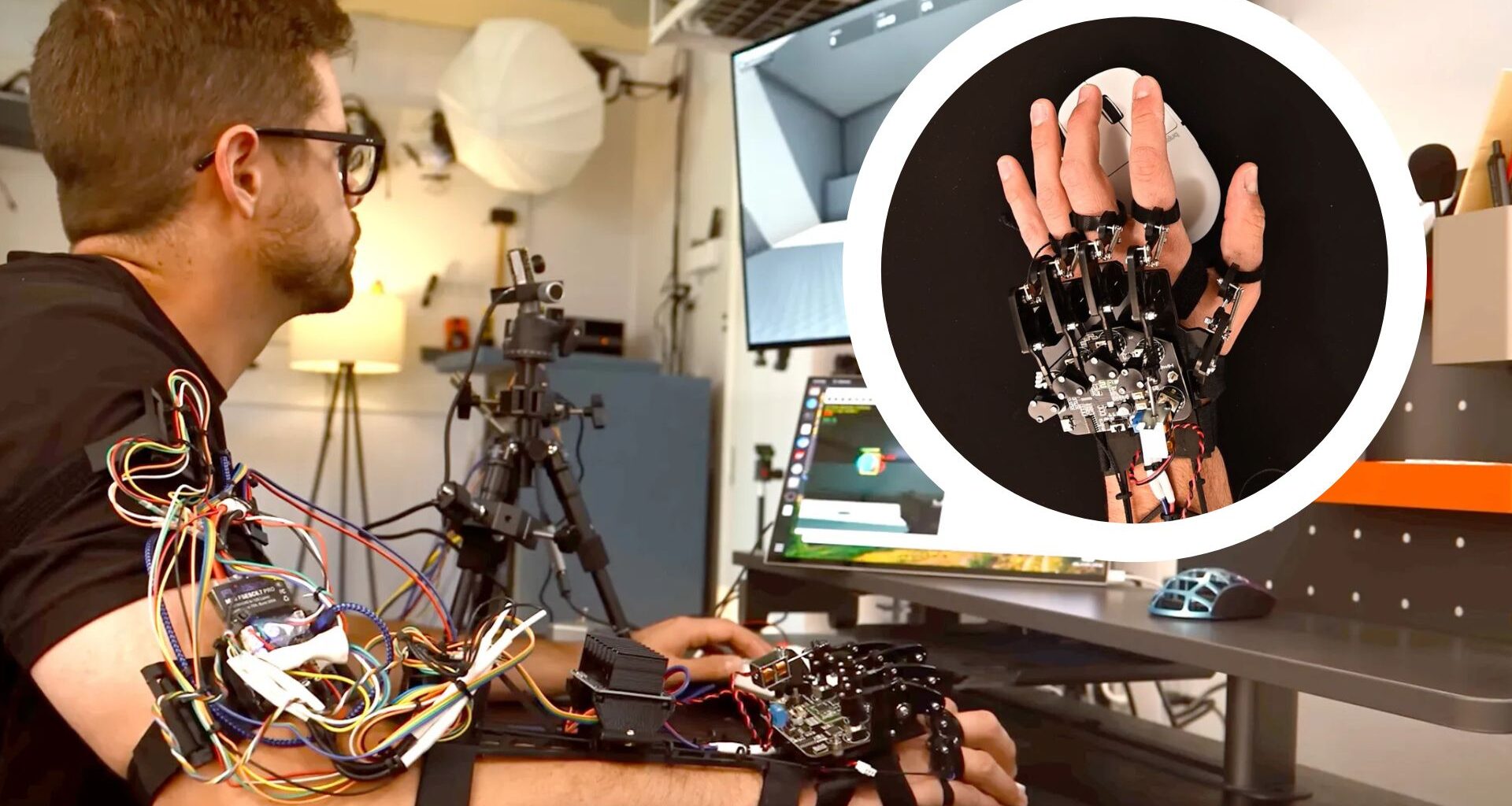When it comes to unusual engineering projects, Nick Zetta has built a reputation of his own.
The YouTuber, better known as Basically Homeless, has now unveiled a robotic exoskeleton designed to improve aim in Aimlabs’ popular training program.
The device combines AI vision, motors, and 3D-printed parts to guide his wrist and fingers physically.
Zetta started the project after feeling stuck at a score of 135,000 in Aimlabs.
He wondered if robotics could push his performance further. The design included a motorized wrist assist, a solenoid “finger clicky exoskeleton,” and an AI vision system for target detection.
The first tests did not go smoothly.
Early runs showed a 20% drop in accuracy, as Zetta struggled to let the system control his movements. Once he adapted, he recorded a small 3% gain over his best score.
He then began optimizing the hardware. A Nvidia Jetson board powered a custom YOLO computer-vision model.
Latency fell from 50 milliseconds to just 17 milliseconds, nearly instantaneous. He boosted motor voltage, making the system stronger and able to guide his arm even against resistance.
Results quickly improved. One run showed a 12% boost, then 28%, 43%, and finally a 63% leap. That placed Zetta in second position on the Aimlabs global leaderboard.
How the exoskeleton works
The device attaches to the forearm with 3D-printed hinges. Kevlar lines and gimbal motors control the wrist, while solenoids handle finger clicks.
A high-speed global shutter camera feeds data to the AI system. The computer identifies targets and instructs the motors to adjust the hand and wrist in real time.
The setup acts like a physical aimbot. Unlike traditional cheats, which are software-based, this exoskeleton alters real-world arm movements.
Competitive tests showed the system’s precision. It allowed rapid target acquisition and consistent aim assist. The project blurred the line between human skill and machine correction.
Zetta acknowledged the learning curve. He had to relax his wrist and let the motors take control. Once he adjusted, the exoskeleton performed as intended.
Future potential
The project does raise some questions about fairness in gaming. Different gamers have different opinions about aim assists and in-game hacks, but most lean toward keeping competitive games as fair as possible.
Aimbots have been a problem since the 1990s, but developers fight them with software tools. Physical assistive devices, on the other hand, are harder to detect.
Zetta framed the build as an “anti-scammer eye replacement exoskeleton.” While designed with humor, the project showed serious engineering potential.
But that is not all, in the video, he also hinted at where it could go next. If the system were combined with some neuromuscular elements, he suggested, the results could be even better.
He didn’t elaborate, but the idea leaves room for something far more ambitious than aim assist.
For now, the exoskeleton remains both a comedy bit and a striking proof of concept. It proves that blending robotics, AI, and mechanical design can push human reflexes far beyond their natural limits.

